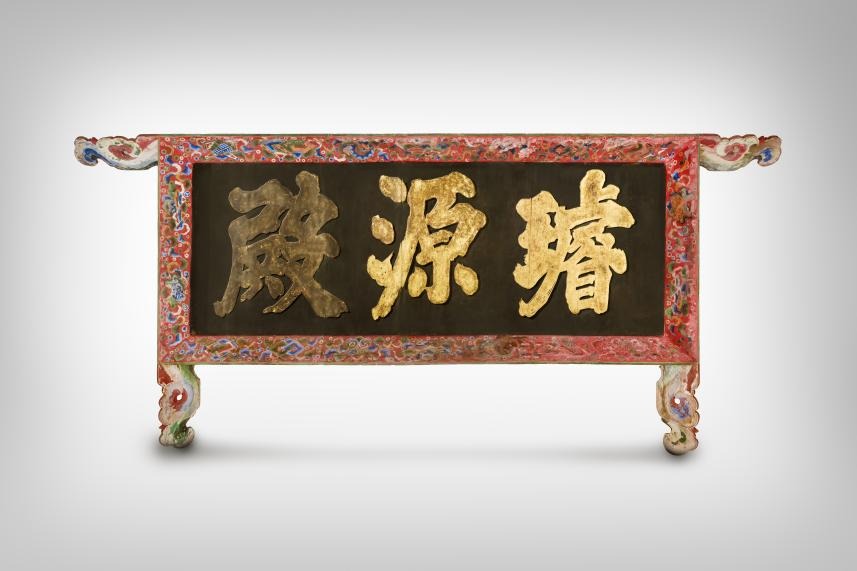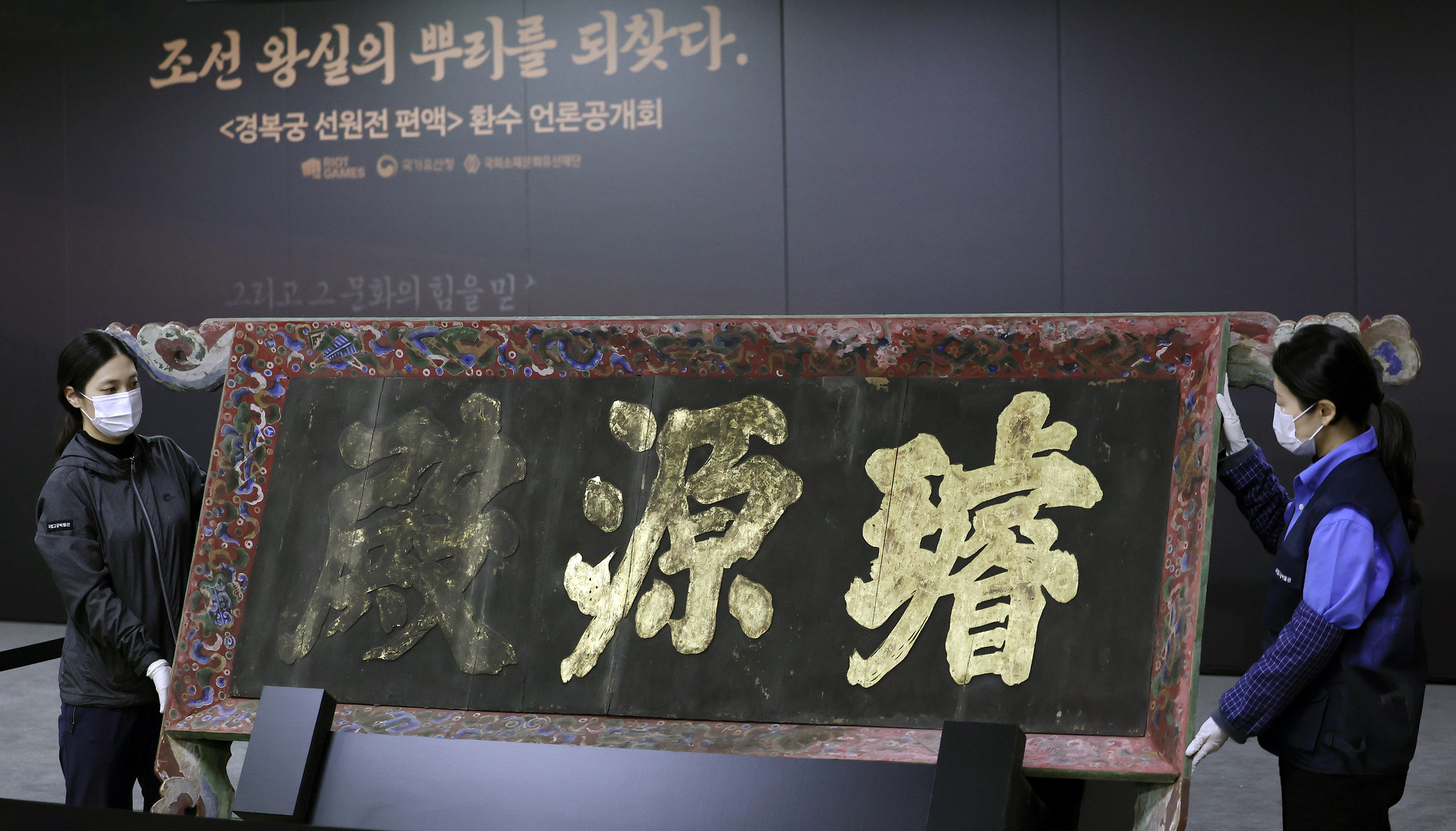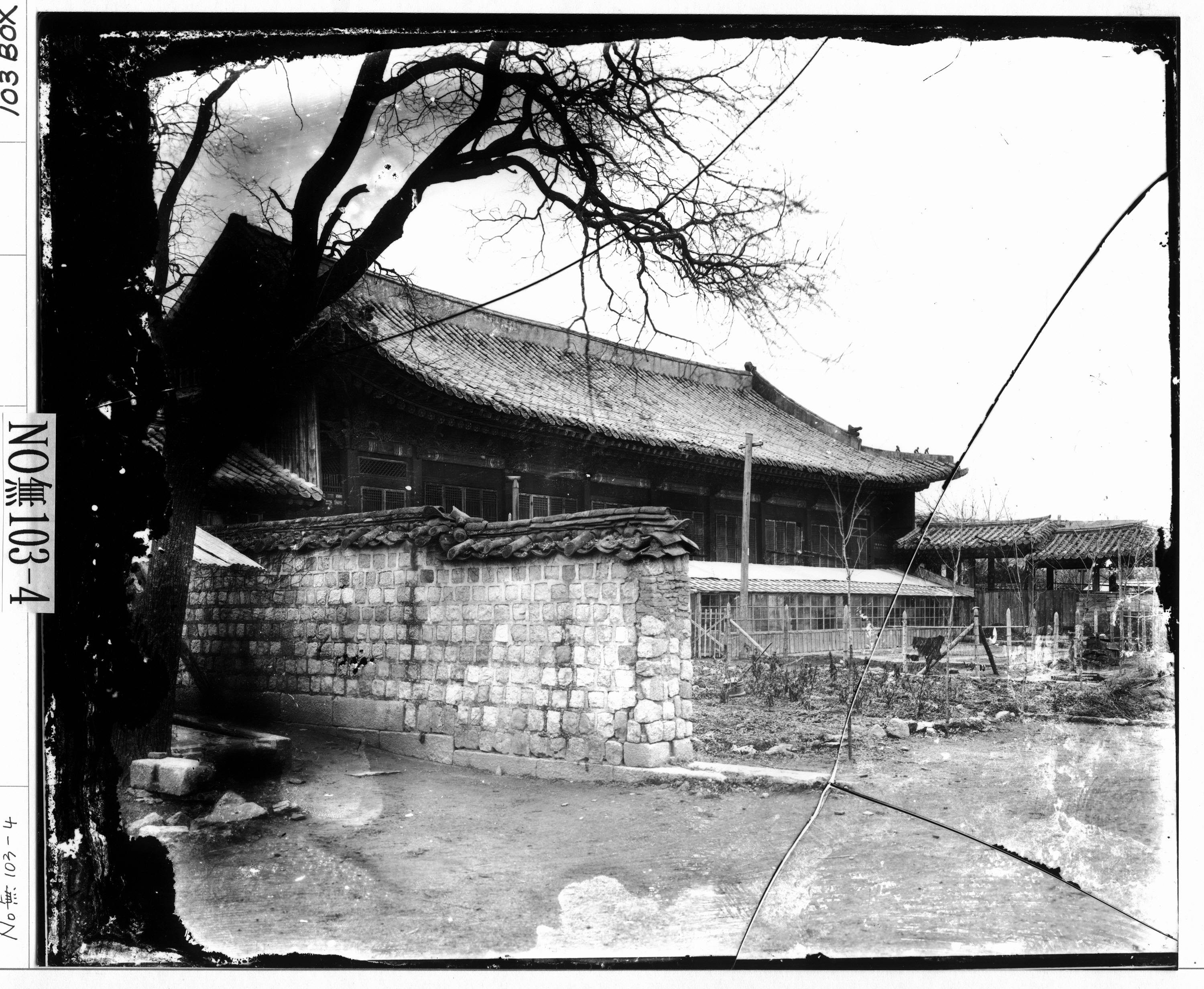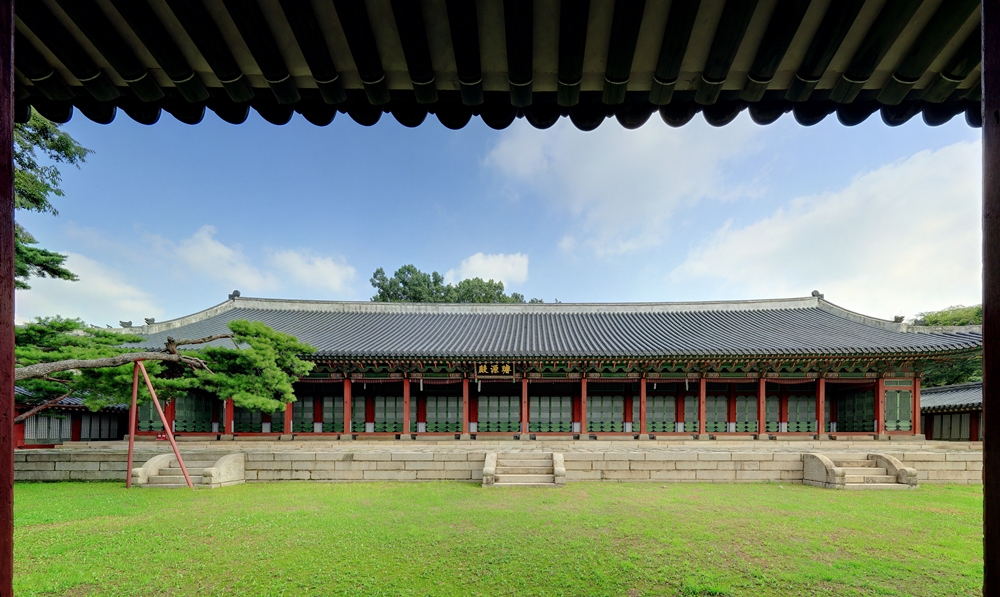- 한국어
- English
- 日本語
- 中文
- العربية
- Español
- Français
- Deutsch
- Pусский
- Tiếng Việt
- Indonesian

Signboard of Seonwonjeon Hall (Korea Heritage Service)
By Charles Audouin
Video = Park Dae Jin
A signboard of Seonwonjeon Hall, a venue that displayed the portraits of past kings of the Joseon Dynasty (1392-1910) and hosted royal ceremonies, has been returned from Japan.
The Korea Heritage Service (KHS) and the Overseas Korean Cultural Heritage Foundation on Feb. 27 unveiled the relic, which is believed to have been hung at the hall within Gyeongbokgung Palace, at the National Palace Museum of Korea in Seoul's Jongno-gu District.
Such a signboard usually had a picture and calligraphy inscribed on paper, silk and a board and was hung inside a room or on top of a door. Its myriad of production methods varied by formality and rank of the relevant building.

The signboard of the former Seonwonjeon Hall at Gyeongbokgung Palace is unveiled on Feb. 27 at the National Palace Museum of Korea in Seoul's Jongno-gu District. (Lee Jun Young)
Measuring 140 cm wide, 321 cm long and 1.8 thick, the wooden relic was repatriated in February last year with financial support from Riot Games. How the item was originally taken to Japan from Korea remains unclear.
The two Chinese characters on the right for "Seonwon" mean "origin of jade," as the stone in ancient China was used to symbolize the monarchy. The letters were inscribed in gold on a black lacquer background, and the extended pole features the designs of a cloud and treasures such as fans and wrapping cloth.
KHS Administrator Choi Eung-Chon said, "Considering the circumstances and records of Seonwonjeon Hall's construction and demolition at each royal palace, we deduced that this signboard was hung on the one at Gyeongbokgung Palace, which was reconstructed in 1868."

This is Seonwonjeon Hall at the reconstructed Gyeongbokgung Palace in 1868. (National Museum of Korea)
Located within a royal palace during the Joseon era, Seonwonjeon housed the portraits of the dynasty's kings and was where the king performed rituals like burning incense and paying homage. The hall was deemed high ranking with the meaning "long-standing roots of the Joseon royal family" at a time when the dynasty considered loyalty and filial piety as the basis for its rule.
First built in 1444 at Gyeongbokgung, Seonwonjeon was burned to the ground during the Imjin Waeran, or Japan's invasions of the Korean Peninsula from 1592-98. Later in 1695, one was built at Changdeokgung Palace.
Another version of the hall was built in 1868 at Gyeongbokgung during the latter's reconstruction under King Gojong's reign. And yet another was built in 1897 at Gyeongungung (now Deoksugung) Palace.
Under the Korean Empire (1897-1910), Seonwonjeon was thus set up at the palaces of Gyeongbokgung, Changdeokgung and Gyeongungung. The portraits at the hall were relocated whenever the king changed locations.

Seonwonjeon Hall at Changdeokgung Palace (Korea Heritage Service)
After the Seonwonjeon at Gyeongungung burned down in 1900, it was rebuilt the following year and relocated to Changdeokgung in 1921. The hall at Gyeongbokgung was demolished during Japanese rule of the Korean Peninsula (1910-45).
Just two Seonwonjeon structures remain: one at Changdeokgung and the other at Deoksugung.
caudouin@korea.kr